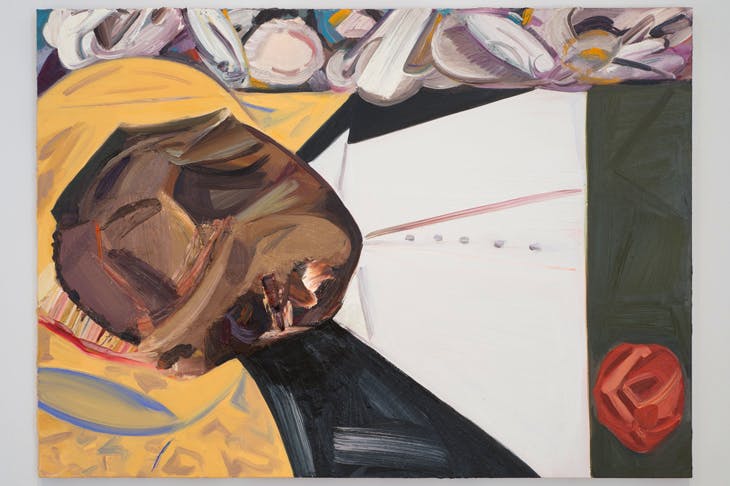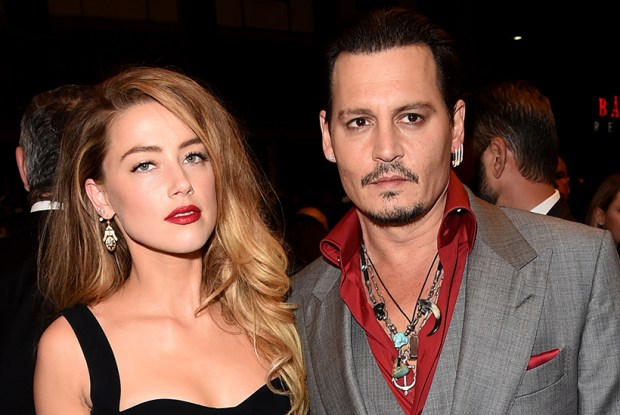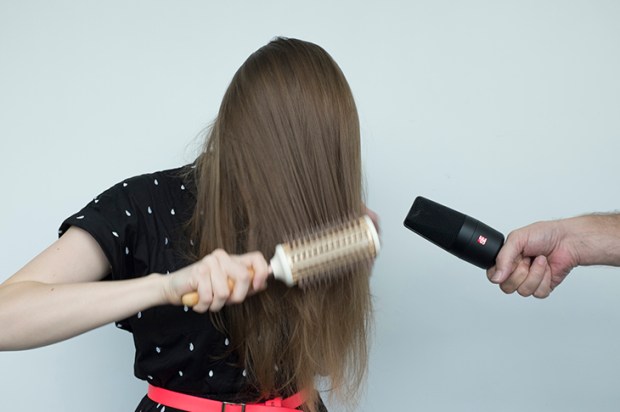It’s usually best to ignore the indignant fury of the 21st-century young. We’re used to them now, these snowflakes, posing as victims (though they’re mostly middle-class), demanding ‘safe spaces’, banning books and speakers. Best to rise above them, deadhead the camellias. Attention, especially from the press, acts on entitled millennials like water on gremlins — they start proliferating and develop a taste for blood.
But then sometimes they go too far.
Ten days ago, the Whitney museum, on the New York bank of the Hudson, opened its biennial exhibition of contemporary American art. It’s an exciting show, full of vim and diversity. Half the artists represented are black, and the exhibition’s stated aim is to confront racism and poverty in the States.
One of the white Whitney artists is a woman called Dana Schutz, and one of her paintings is of a famous photograph of a dead black boy, Emmett Till. Till was tortured and beaten to death in the mid-1950s by redneck bigots and Schutz’s painting is called ‘Open Casket’ because his brave mother chose to display his ruined face so that the world could see what had happened. The photograph, published in Jet magazine, helped change America. Schutz made the work, she says, because America still needs to change — as witnessed by the shooting of unarmed young black men by police.
So far, so unobjectionable — admirable even, right? Wrong. Since the Whitney opened its doors, there has been a non-stop wailing from twentysomethings on both sides of the Atlantic for the painting to be destroyed. Schutz is guilty of ‘cultural appropriation’. Because she’s white and a member of the oppressor class, she shouldn’t have been allowed to depict black suffering. One young Brit, a writer called Hannah Black, wrote an open letter to the curators explaining that even if Schutz meant well, her painting is an abomination: ‘This painting should not be acceptable to anyone who cares or pretends to care about Black people because it is not acceptable for a white person to transmute Black suffering into profit and fun… The subject matter is not Schutz’s; white free speech and white creative freedom have been founded on the constraint of others, and are not natural rights.’
An artist called Parker Bright has spent the week standing, arms folded, in front of the painting to hide it. He says it’s ‘an injustice to the black community’ which perpetuates ‘the same kind of violence that was enacted on Till’.
The most worrying thing about the whole daft episode is not so much that the American press has taken it seriously, more the total disdain of these educated twentysomethings for reason. White free speech is not a natural right? Such confidence, such nonsense.
The gist of the protest is that Schutz, as a member of a fortunate class, should pipe down about the suffering of the less fortunate. But if the powerful can’t champion underdogs, in the arts or in politics, how do these young warriors imagine anything will change? If, say, a white congressman were to speak out about the suffering of black men at the hands of cops, would that be cultural appropriation? If not, why not? Schutz was trying to change things too. Was it an appropriation of female suffering for John Stuart Mill to campaign for women’s rights? I’m not sure there’s ever been a more terrible own goal than this weird prohibition on good causes.
Because they don’t believe in critical thought, because it’s enough for these kids just to feel, they don’t seem to realise that the world they want would be one without art. For one thing, they’ll burn it; for another, the sort of censorship they suggest would kill creativity stone dead. No ‘Disasters of War’ from Goya, no ‘Guernica’ from rich, white Picasso.
A similar row trailed the writer Lionel Shriver last year after her speech at the Brisbane writers’ festival in which she attacked the notion of ‘cultural appropriation’ in literature. Shriver said: ‘The ultimate endpoint of keeping our mitts off experience that doesn’t belong to us is that there is no fiction. Someone like me only permits herself to write from the perspective of a straight white female born in North Carolina, closing on 60, able-bodied but with bad knees, skint for years but finally able to buy the odd new shirt. All that’s left is memoir.’
And who do these righteous muppets think should decide on culturally appropriate subjects for writers and artists? Do they imagine a licensing body, an arm of government going from studio to studio checking for privilege? The truth is, they don’t imagine anything. They just don’t do sustained thought. For them, it’s enough to harangue, and to signal lofty indifference to criticism on Twitter: ‘Wow. Just wow.’
If the most worrying thing is the lack of logic, the saddest thing about the Schutz affair is the lack of empathy. Parker Bright compares Dana Schutz to the vicious, racist thugs who tortured Emmett Till to death. What about her feelings? A Twitter kid posted a photo of Schutz with the words ‘Burn this shit, bitch’ scrawled across it in red like a death threat.
Unchecked by reason, therefore unworried by hypocrisy, snowflakes creep closer and closer towards actual violence. The week before the Whitney show opened, students at Middlebury College in Vermont turned out to protest against a talk by Charles Murray, author of The Bell Curve. Having long ago decided that free speech is hurtful and unnecessary, they crowded around Murray chanting ‘Who is the enemy? White supremacy!’ and ‘Anti-black, anti-gay, go away!’ There’s no evidence that Murray is anti-gay or racist, but if you self-define as a victim, you can be as aggressive and offensive as you like.
They jumped on his car, rocking and pounding it. Unable to get at Murray, one male demonstrator grabbed a female professor by the hair and twisted her head. She ended up in hospital. But that’s not cultural appropriation, so who cares?
Got something to add? Join the discussion and comment below.
Get 10 issues for just $10
Subscribe to The Spectator Australia today for the next 10 magazine issues, plus full online access, for just $10.
You might disagree with half of it, but you’ll enjoy reading all of it. Try your first month for free, then just $2 a week for the remainder of your first year.















Comments
Don't miss out
Join the conversation with other Spectator Australia readers. Subscribe to leave a comment.
SUBSCRIBEAlready a subscriber? Log in